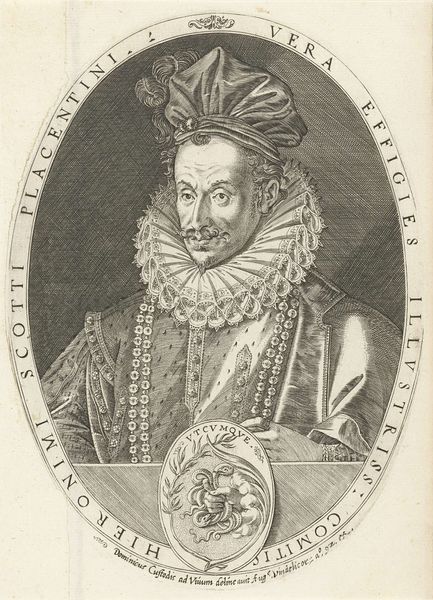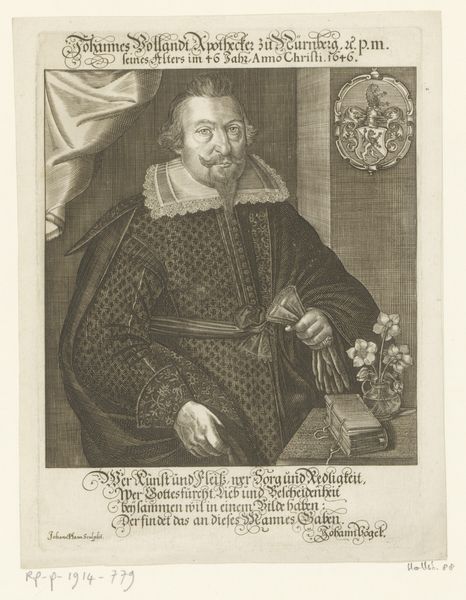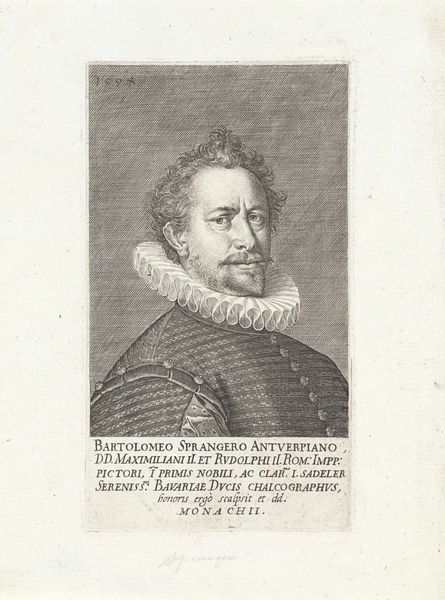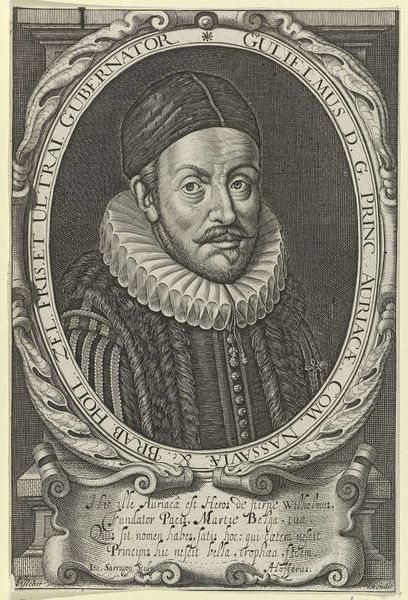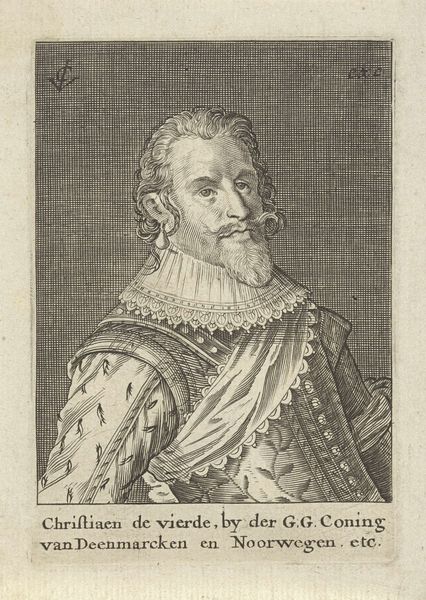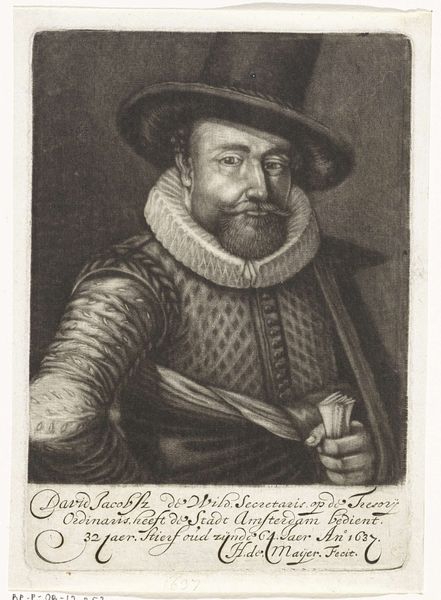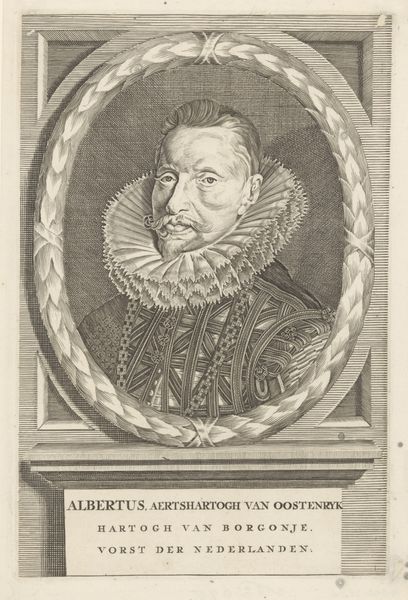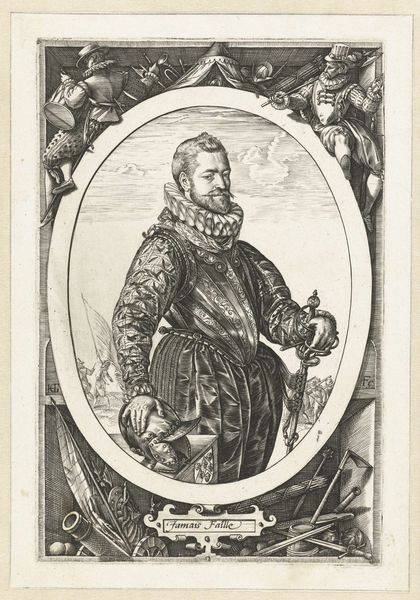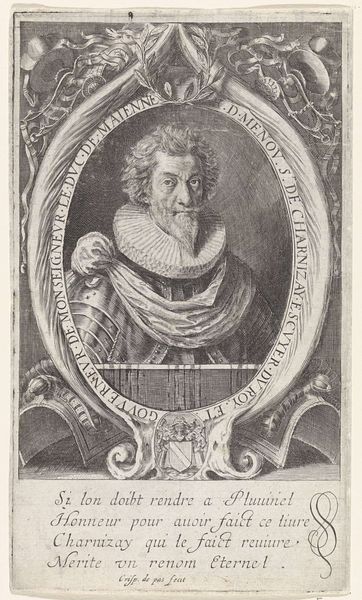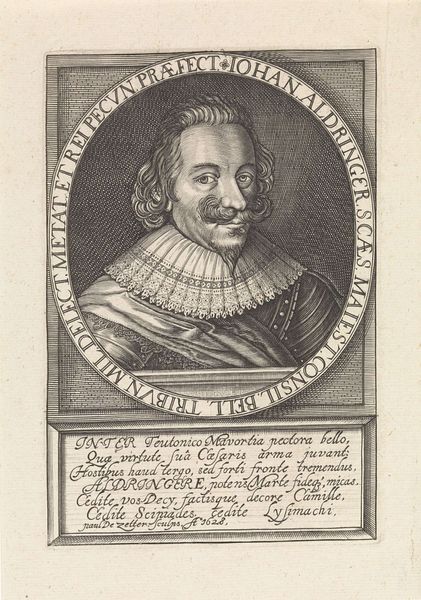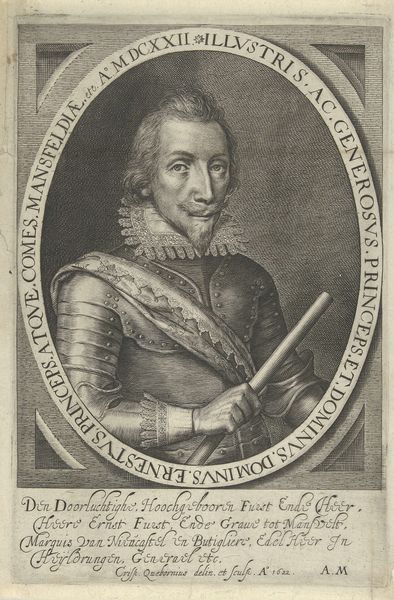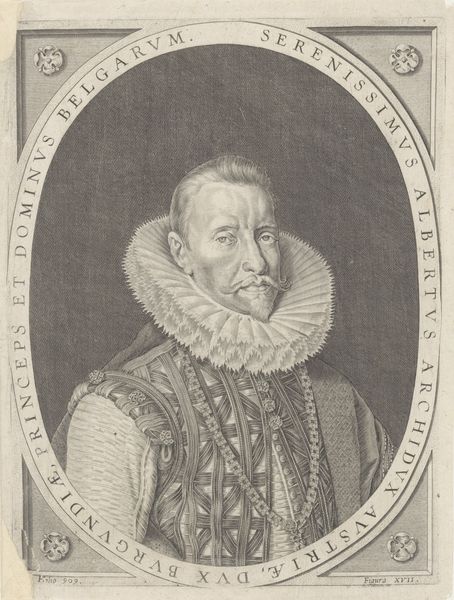
print, metal, engraving
#
portrait
#
baroque
# print
#
metal
#
old engraving style
#
history-painting
#
engraving
Dimensions: height 105 mm, width 69 mm
Copyright: Rijks Museum: Open Domain
Curator: Let's delve into this print, "Portret van Ferdinand II, Duits keizer," dating from 1619 to 1652, held here at the Rijksmuseum. It's an engraving, offering a fascinating glimpse into the portrayal of power in the Baroque era. Editor: My initial reaction is one of austerity. The figure is rigidly posed, and the stark contrasts of the engraving lend a sense of solemnity, but there is some elegance, for example in the shape of the ruff. The details in the shading seem obsessive in their precision. Curator: Indeed. Notice the painstaking technique. The lines etched into the metal plate, the meticulous hatching – consider the artisan labor involved in creating multiple impressions of this image, disseminating power and authority. It's not just art; it's a mode of mass production for the era. And think of the cost. Editor: Absolutely. The formality evident here can be attributed to Baroque aesthetics. The crown of leaves, the fur, the precise rendering of details invite a semiotic reading, what we see are visual cues intended to immediately and powerfully communicate status. This artwork is meant to project a singular, clear message of authority. Curator: And who was consuming these images? What were their socio-political circumstances? Perhaps they hung these images to project power of their own through identification. Editor: Exactly, and it’s vital not just to consider the symbolic content but the formal interplay of dark and light areas of visual tension, especially noticeable in his robe. Curator: Certainly. It shows the engravers control and labor that went into capturing light through the manipulation of engraved lines on the copper plate. Each print would show this to differing degrees, therefore these materials matter and reflect how value was communicated through it, therefore cementing the social context. Editor: A perfect synthesis. The materials and construction, as you point out, cannot be detached from our ability to recognize Baroque representation and its associated power structures. We appreciate the interplay between technical means, visual form, and the image's potent aura of power.
Comments
No comments
Be the first to comment and join the conversation on the ultimate creative platform.

